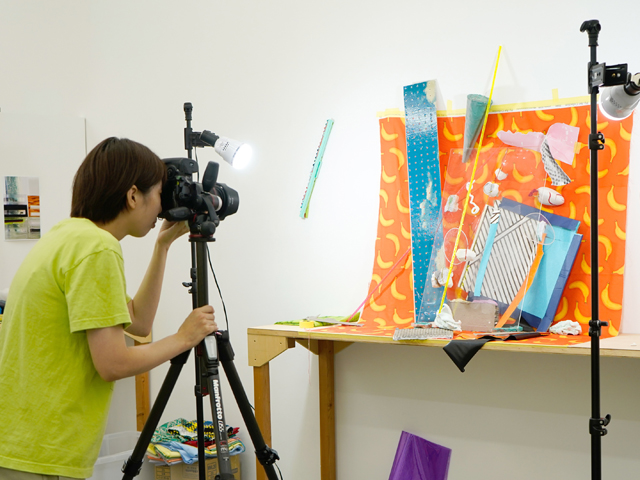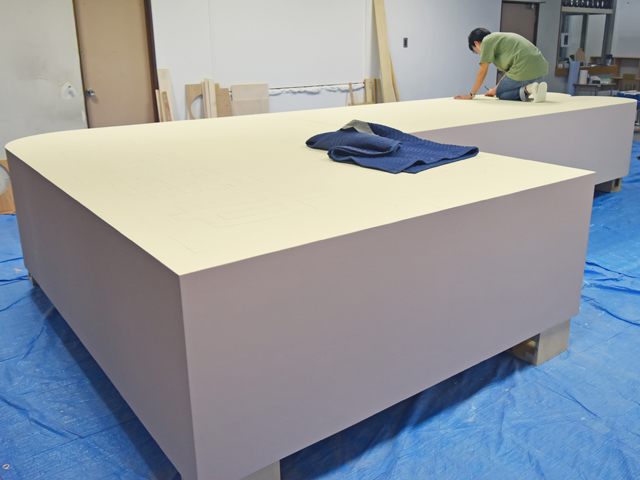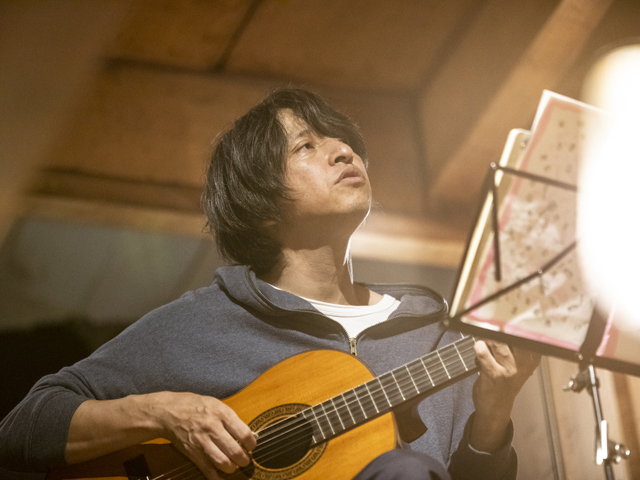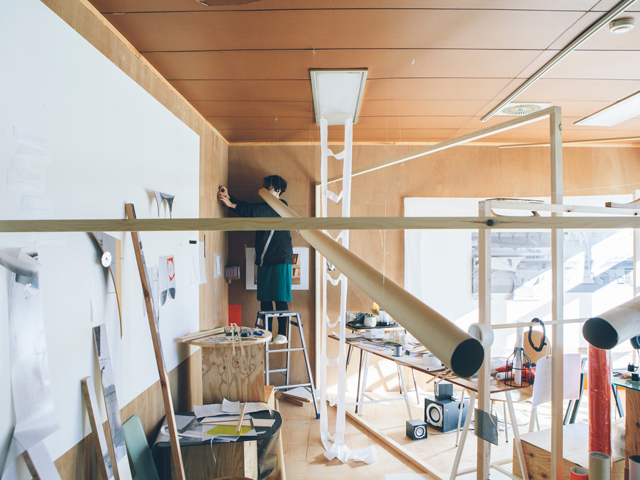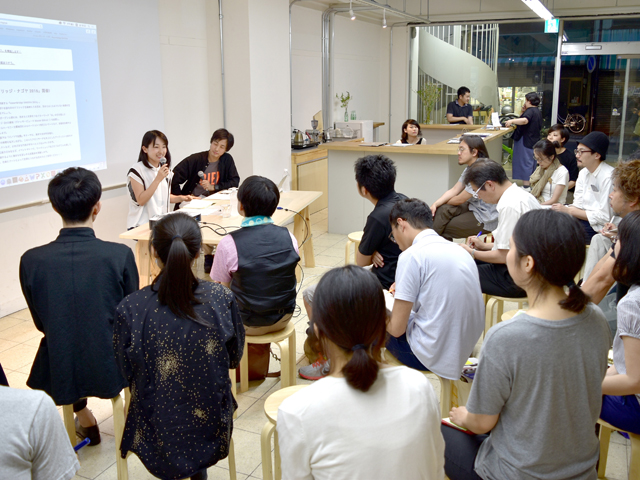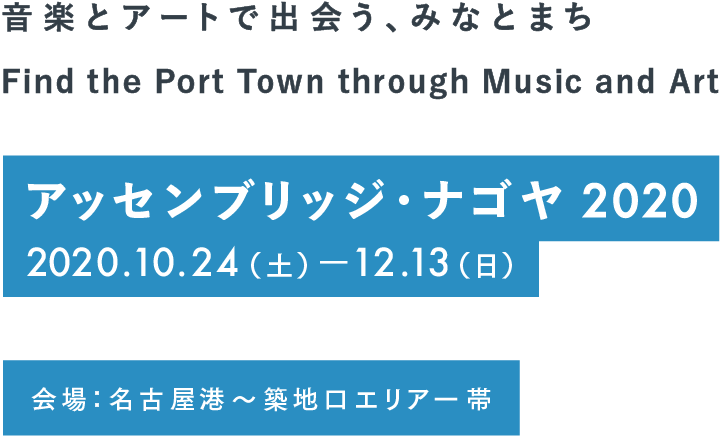
現代美術展『パノラマ庭園 -亜生態系へ-』
EXHIBITION “PANORAMA GARDEN –Towards a Sub-Ecosystem–”
アッセンブリッジ・ナゴヤは5年目を迎えます。アート部門は「パノラマ庭園」をテーマに名古屋港エリアを変容しつづける庭に見立て、プロジェクトを通じて、まちという生態系の一部としてその変化への応答を試みてきました。造園家ジル・クレマンが著作『動いている庭』で提示した「できるだけあわせて、なるべく逆らわない」(山内朋樹訳、2015年)という態度に共感し、まちでのアートプロジェクトを実践してきたと言い換えることもできます。
新型コロナウイルスが蔓延する今、多くの人がまちやフェスティバルに訪れることが困難になりました。フェスティバルは日常の生活圏を多くの人で賑わう非日常のハレの舞台へと開くものでしたが、この状況下でフェスティバルのあり方自体が問われています。一方、大きな美術館や劇場でない、まちなかの小さな空き家を主な会場とするアッセンブリッジ・ナゴヤで、実施すべきフェスティバルの規模や方法を改めて模索しています。
5年目として区切りとなる今年、もう一度原点に立ち返ることから始めたいと考えました。それは「つくる/うまれる場所」としての港まちです。アーティストが滞在し、創作に打ち込める場が港まちには複数あります。この5年間で、空き家を少しずつ整備し活動や制作の拠点としてきました。いくつかは既に解体され、またかたちを変え別の場所に移動しています。変化を受け入れつつ、これまで異なるアーティストが接木をするようにさまざまな活動をこのエリアで展開し、小さな手入れ(メンテナンス)を重ねてきました。
「できるだけ合わせて、なるべくさからわない」を基底としつつも、「パノラマ庭園」はまちや人の暮らしに介入していく試みでもあります。美学者で庭師の山内朋樹は「ありふれた草花や鉢植えがそこにあることが、失調した世界に、わずかばかりの秩序をあたえている」(1)状態を、「亜生態系」と呼び、パンジーのように一見凡庸な外来種がプランターに植えられている情景が、人びとに不思議な落ち着きを与えることを肯定します。港まちの状況はここで描かれている情景に近いものでしょう。
混沌のなかに小さな秩序を生み出すように、意志を持って創造し、「オープンエンド(おわりなき過程)」「境界をまたぐ」「移動と交換」「ポイエシスとミメーシス(制作と再現)」などをキーワードに、それぞれのアーティストのプロジェクトを「パノラマ庭園」として展開していきます。
(1)山内朋樹「なぜ、なにもないのではなく、パンジーがあるのかー浪江町における復興の一断面」『アーギュメンツ#3』2018年(P.15)
新型コロナウイルスが蔓延する今、多くの人がまちやフェスティバルに訪れることが困難になりました。フェスティバルは日常の生活圏を多くの人で賑わう非日常のハレの舞台へと開くものでしたが、この状況下でフェスティバルのあり方自体が問われています。一方、大きな美術館や劇場でない、まちなかの小さな空き家を主な会場とするアッセンブリッジ・ナゴヤで、実施すべきフェスティバルの規模や方法を改めて模索しています。
5年目として区切りとなる今年、もう一度原点に立ち返ることから始めたいと考えました。それは「つくる/うまれる場所」としての港まちです。アーティストが滞在し、創作に打ち込める場が港まちには複数あります。この5年間で、空き家を少しずつ整備し活動や制作の拠点としてきました。いくつかは既に解体され、またかたちを変え別の場所に移動しています。変化を受け入れつつ、これまで異なるアーティストが接木をするようにさまざまな活動をこのエリアで展開し、小さな手入れ(メンテナンス)を重ねてきました。
「できるだけ合わせて、なるべくさからわない」を基底としつつも、「パノラマ庭園」はまちや人の暮らしに介入していく試みでもあります。美学者で庭師の山内朋樹は「ありふれた草花や鉢植えがそこにあることが、失調した世界に、わずかばかりの秩序をあたえている」(1)状態を、「亜生態系」と呼び、パンジーのように一見凡庸な外来種がプランターに植えられている情景が、人びとに不思議な落ち着きを与えることを肯定します。港まちの状況はここで描かれている情景に近いものでしょう。
混沌のなかに小さな秩序を生み出すように、意志を持って創造し、「オープンエンド(おわりなき過程)」「境界をまたぐ」「移動と交換」「ポイエシスとミメーシス(制作と再現)」などをキーワードに、それぞれのアーティストのプロジェクトを「パノラマ庭園」として展開していきます。
(1)山内朋樹「なぜ、なにもないのではなく、パンジーがあるのかー浪江町における復興の一断面」『アーギュメンツ#3』2018年(P.15)
企画|服部浩之、青田真也、吉田有里
Assembridge NAGOYA will count its fifth edition this year. Under the theme “PANORAMA GARDEN, the Art Division has responded to the changes as part of the ecosystem by looking at the Nagoya Port area as a garden that continuously transforms itself. In other words, it has been sympathizing with the attitude the gardener Gilles Clément had suggested in his book Le Jardin en Mouvement (The Garden in Movement) (Japanese translation by Tomoki Yamauchi, 2015), that we ought to “not go against circumstances, but to accommodate with it”.
Now that the new coronavirus is widespread, it has become difficult for many people to visit towns and festivals. The festival has been a door that opens an extraordinary stage crowded with many people in a daily living area, but under this circumstance, the way the festival should be is being questioned. On the other hand, at Assembridge NAGOYA, whose main venues are small vacant houses in town and not at large museums or theaters, we are reinvestigating what scale and method the festival should be.
This year, which marks the fifth year, thought of returning to our starting point, to begin with. That is to say, a port town which is a “place to make/create”. There are several locations in the Nagoya Port area where artists can stay and devote themselves to their creations. Over the last five years, we have gradually improved vacant houses and used them as bases for activities and production. Some have already been demolished, and some have changed shapes or have moved to different locations. While accepting changes and as though grafting with different artists, we have carried out varied activities in this area and have continued the small maintenances.
Although the basic idea is to “not go against circumstances, but to accommodate with it”, “PANORAMA GARDEN” is also an attempt to intervene in the lives of the town and its people. Tomoki Yamauchi, a gardener and a researcher in aesthetics, called the state where “the presence of common flowers and potted plants give a slight order to the ataxic world"(1) as a "sub-ecosystem" and affirmed the scenes where seemingly mediocre alien species planted in planters provide a mysterious calm to the people. The situation in the Nagoya Port area is somewhat similar to the scene depicted here.
Along with some keywords such as “open-end (never-ending process)”, “crossing boundaries”, “movements and exchanges”, and “poiesis and mimesis (production and reproduction)", projects by each artists will be developed as a “PANORAMA GARDEN” and will intendedly create a small order in the chaos.
(1)Tomoki Yamauchi “Why there are pansies, instead of nothing - a sectional restoration view in Namie” , Arguments #3, 2018, p.15
Now that the new coronavirus is widespread, it has become difficult for many people to visit towns and festivals. The festival has been a door that opens an extraordinary stage crowded with many people in a daily living area, but under this circumstance, the way the festival should be is being questioned. On the other hand, at Assembridge NAGOYA, whose main venues are small vacant houses in town and not at large museums or theaters, we are reinvestigating what scale and method the festival should be.
This year, which marks the fifth year, thought of returning to our starting point, to begin with. That is to say, a port town which is a “place to make/create”. There are several locations in the Nagoya Port area where artists can stay and devote themselves to their creations. Over the last five years, we have gradually improved vacant houses and used them as bases for activities and production. Some have already been demolished, and some have changed shapes or have moved to different locations. While accepting changes and as though grafting with different artists, we have carried out varied activities in this area and have continued the small maintenances.
Although the basic idea is to “not go against circumstances, but to accommodate with it”, “PANORAMA GARDEN” is also an attempt to intervene in the lives of the town and its people. Tomoki Yamauchi, a gardener and a researcher in aesthetics, called the state where “the presence of common flowers and potted plants give a slight order to the ataxic world"(1) as a "sub-ecosystem" and affirmed the scenes where seemingly mediocre alien species planted in planters provide a mysterious calm to the people. The situation in the Nagoya Port area is somewhat similar to the scene depicted here.
Along with some keywords such as “open-end (never-ending process)”, “crossing boundaries”, “movements and exchanges”, and “poiesis and mimesis (production and reproduction)", projects by each artists will be developed as a “PANORAMA GARDEN” and will intendedly create a small order in the chaos.
(1)Tomoki Yamauchi “Why there are pansies, instead of nothing - a sectional restoration view in Namie” , Arguments #3, 2018, p.15
Planning | Hiroyuki Hattori, Shinya Aota, Yuri Yoshida
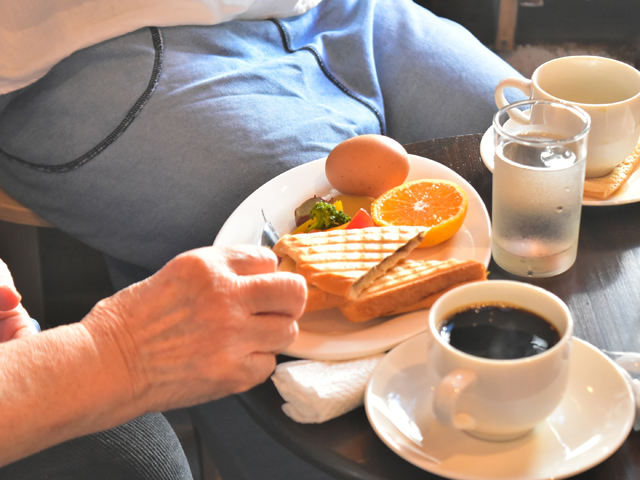
EVENT
たとえば、いつもより早く起きて港街でモーニングを食べてみるとする。
For instance, wake up earlier than usual and eat breakfast at the port town.
11.14(土)7:00-10:00
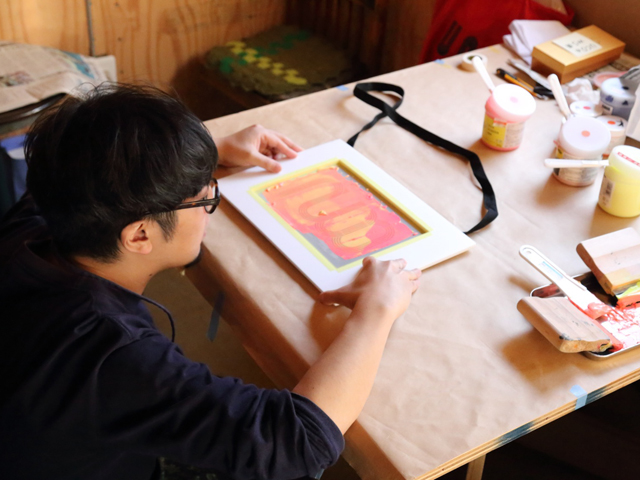
EVENT
L PACK. × フクナガコウジ New Useful Copied Objects
New Useful Copied Objects by L PACK. and Kohji Fukunaga
11.14(土)11:00-18:00
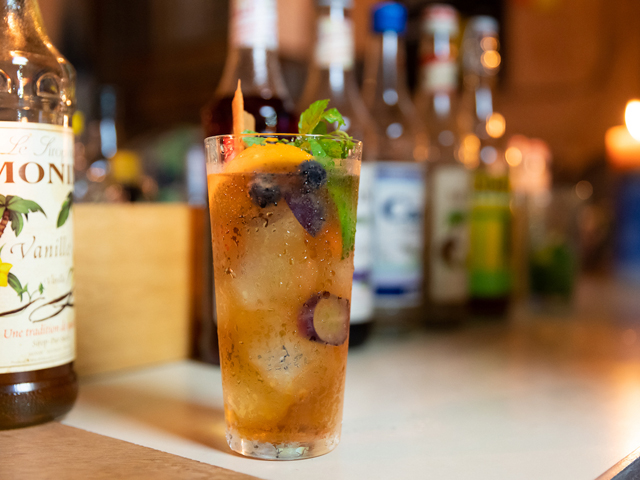
EVENT
L PACK.「Cocktail Club Cola de gallo(カクテルクラブ コーラ・デ・ガジョ)」
L PACK.「Cocktail Club Cola de Gallo」
11.14(土)19:00-21:00










